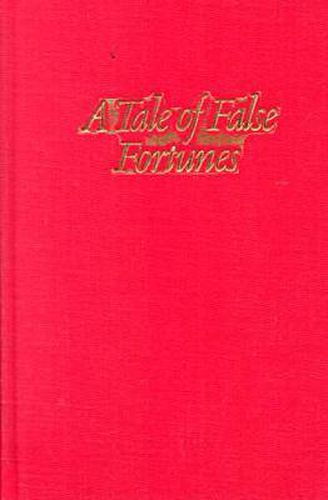Readings Newsletter
Become a Readings Member to make your shopping experience even easier.
Sign in or sign up for free!
You’re not far away from qualifying for FREE standard shipping within Australia
You’ve qualified for FREE standard shipping within Australia
The cart is loading…






A Tale of False Fortunes is a masterful translation of Enchi Fumiko’s (1905-1986) modern classic, Namamiko monogatari. Written in 1965, this prize-winning work of historical fiction presents an alternative account of an imperial love affair narrated in the eleventh-century romance A Tale of Flowering Fortunes (Eiga monogatari). Both stories are set in the Heian court of the emperor Ichijo (980-1011) and tell of the ill-fated love between the emperor and his first consort, Teishi, and of the political rivalries that threaten to divide them. While the earlier work can be viewed largely as a panegyric to the all-powerful regent Fujiwara no Michinaga, Enchi’s account emphasizes Teishi’s nobility and devotion to the emperor and celebrates her
moral victory
over the regent, who conspired to divert the emperor’s attentions toward his own daughter, Shoshi.
The narrative of A Tale of False Fortunes is built around a fictitious historical document, which is so well crafted that it was at first believed to be an actual document of the Heian period. Throughout Enchi’s innovation and skill are evident as she alternates between modern and classical Japanese, interjecting her own commentary and extracts from A Tale of Flowering Fortunes, to impress upon the reader the authenticity of the tale presented within the novel.
$9.00 standard shipping within Australia
FREE standard shipping within Australia for orders over $100.00
Express & International shipping calculated at checkout
A Tale of False Fortunes is a masterful translation of Enchi Fumiko’s (1905-1986) modern classic, Namamiko monogatari. Written in 1965, this prize-winning work of historical fiction presents an alternative account of an imperial love affair narrated in the eleventh-century romance A Tale of Flowering Fortunes (Eiga monogatari). Both stories are set in the Heian court of the emperor Ichijo (980-1011) and tell of the ill-fated love between the emperor and his first consort, Teishi, and of the political rivalries that threaten to divide them. While the earlier work can be viewed largely as a panegyric to the all-powerful regent Fujiwara no Michinaga, Enchi’s account emphasizes Teishi’s nobility and devotion to the emperor and celebrates her
moral victory
over the regent, who conspired to divert the emperor’s attentions toward his own daughter, Shoshi.
The narrative of A Tale of False Fortunes is built around a fictitious historical document, which is so well crafted that it was at first believed to be an actual document of the Heian period. Throughout Enchi’s innovation and skill are evident as she alternates between modern and classical Japanese, interjecting her own commentary and extracts from A Tale of Flowering Fortunes, to impress upon the reader the authenticity of the tale presented within the novel.